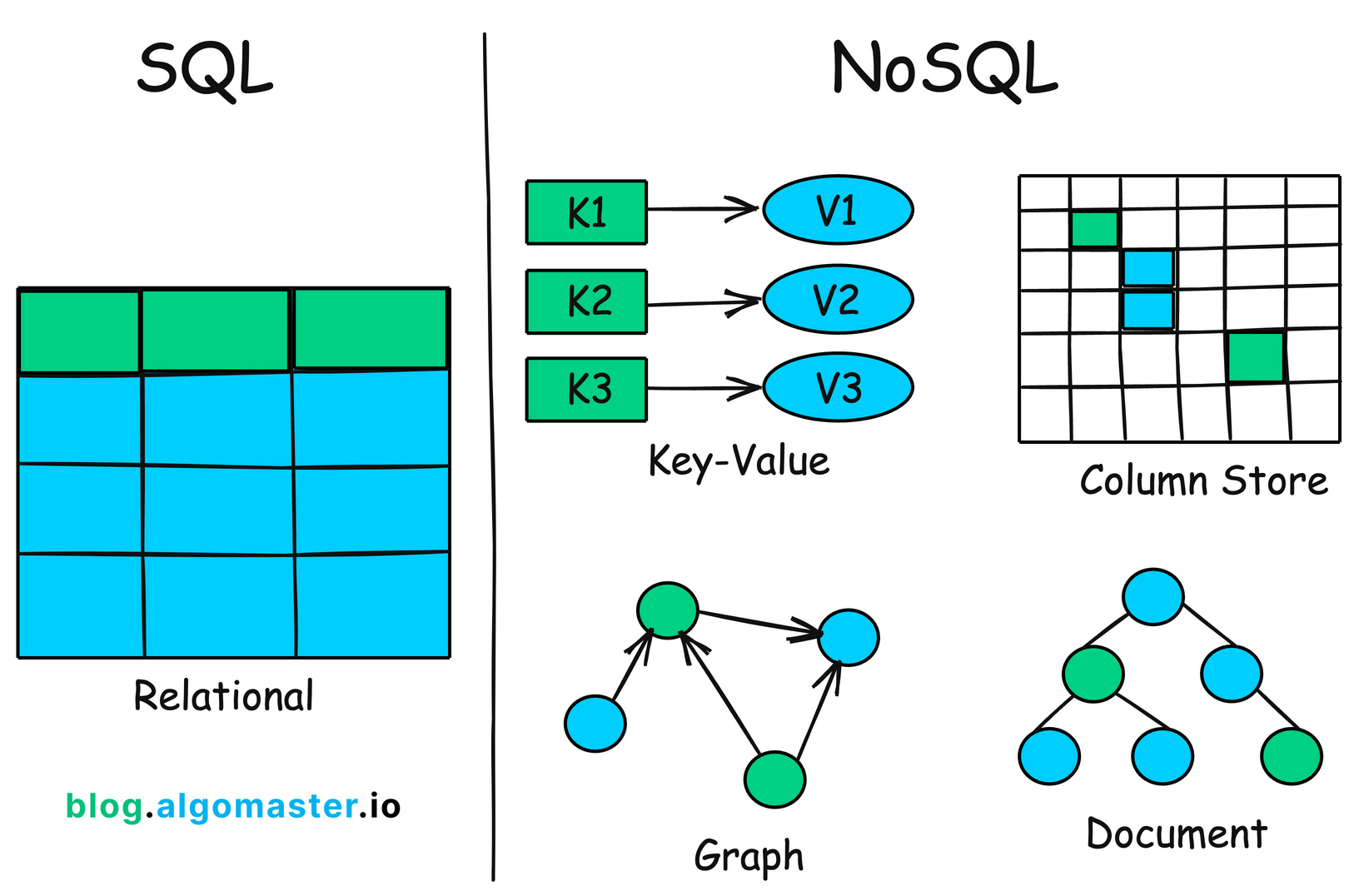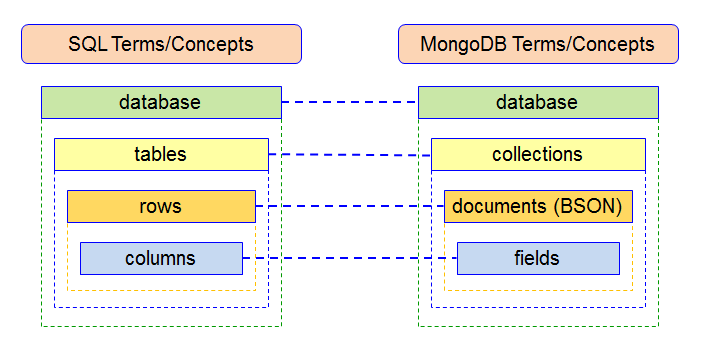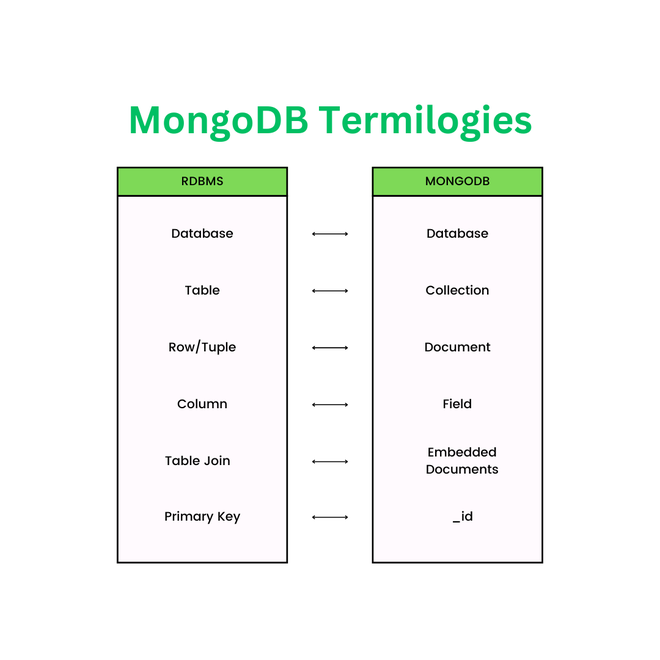introduction
What is MongoDB?
- MongoDB is document based NoSQL Database. Most widely used NoSQL Database in the world.
- Stores Data in JSON like documents. (BSON)
- Very flexible structure to store the data
- Large amount of data can be easily managed.
- It is being used by well known companies like google, adobe, cisco SAP, eBay.
SQL VS NoSQL
SQL databases are vertically scalable, while NoSQL databases are horizontally scalable. SQL databases are table-based, while NoSQL databases are document, key-value, graph, or wide-column stores. SQL databases are better for multi-row transactions, while NoSQL is better for unstructured data like documents or JSON.

SQL Structure
The structure of SQL (Structured Query Language) includes tables, columns, rows, and SQL queries. SQL is a programming language that allows users to manage and manipulate relational databases.
Tables
- The foundation of SQL, tables store data in rows and columns
- Each table has a physical representation of data
Columns
- The fields in a table that define the types of data stored
- Each column has a specific data type, such as INTEGER, VARCHAR, or DATE
Rows
- Each row contains all the information about a single record
SQL queries
- The basic structure of an SQL query includes a SELECT clause, a FROM clause, and an optional WHERE clause
- Other components of an SQL query include GROUP BY, ORDER BY, and LIMIT
SQL commands
- Data Definition Language (DDL) commands are used to build, change, and delete database structures
- Data Manipulation Language (DML) commands are used to store, update, remove, search, and retrieve information from the database
MongoDB Terms


MongoDB Collection Example
{
"_id": ObjectId("63fce3a9e72c4b3a9b9e1b34"),
"title": "1984",
"genre": "Dystopian",
"publishDate": ISODate("1949-06-08T00:00:00Z"),
"author": {
"firstName": "George",
"lastName": "Orwell",
"birthDate": ISODate("1903-06-25T00:00:00Z"),
"nationality": "British"
},
"availability": {
"totalCopies": 5,
"borrowedCopies": 2
},
"borrowRecords": [
{
"memberId": ObjectId("63fce4a9c71a4b8f9d1c3e1f"),
"borrowDate": ISODate("2023-01-15T00:00:00Z"),
"returnDate": null
},
{
"memberId": ObjectId("63fce4c2d92a4b5f7e1f3e21"),
"borrowDate": ISODate("2023-01-20T00:00:00Z"),
"returnDate": ISODate("2023-02-01T00:00:00Z")
}
]
}
Explanation
- Document Structure: MongoDB uses JSON-like documents (
key-value pairs) stored in collections. - Nested Objects: The
authorandavailabilityfields are nested objects. - Array Fields:
borrowRecordsis an array of objects representing borrowing transactions. - Data Types: MongoDB supports
ObjectId,ISODate, numbers, strings, etc.